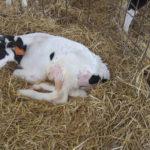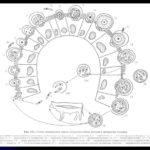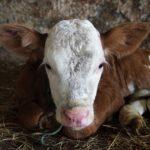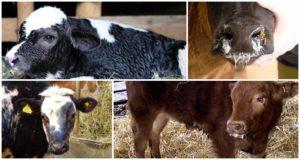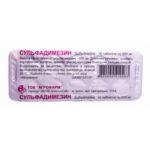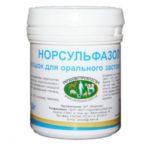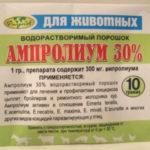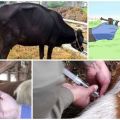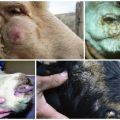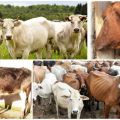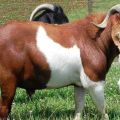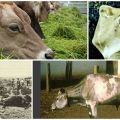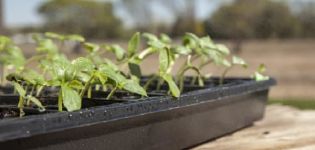Symptoms of Cryptosporidiosis in Calves, Infection Routes and Treatment Methods for Cattle
In calves, the immune system has not yet strengthened, the body is susceptible to negative factors and is susceptible to diseases. One of the most common pathologies is cryptosporidiosis, which occurs in calves with varying degrees of severity. The disease affects not only cattle, but also pets and humans. The infection multiplies on the mucous tissues of the digestive tract, captures the lungs, in the absence of proper treatment, causes the death of the animal.
The concept of the disease
Cryptosporidiosis is an infectious pathology that occurs in calves in acute and subacute form, caused by the simplest pathogenic microorganisms - coccidia, belonging to the Cryptosporidium family. The infection invades the tissues of the stomach and intestines, which disrupts the function of digestion and absorption. Sometimes coccidia are transferred to the respiratory system, negatively affecting immunity.
The mucous tissues of the intestine are the first to suffer during infection. Moreover, the defeat is extensive, covering almost the entire organ. Due to a decrease in the absorption capacity of intestinal tissues, diarrhea begins. Intestinal villi swell and atrophy, and the number of mucus-producing goblet cells decreases. In the intestine, the synthesis of enzymes is significantly reduced, the concentration of sugars in the villi decreases.
Causative agents of the disease
The causative agents of cryptosporidiosis are coccidia of the Cryptosporidium family - round or oval microorganisms. The parasite cell is translucent, its membrane is almost transparent. Representatives of the family are smaller than the rest of the coccidia, but almost do not respond to antimicrobial drugs. Cryptosporidia develop in the host tissues within 3-6 days, with 3 life stages going through:
- Sporogony - multiple division of a fertilized cell - oocyst, 3-7 microns in diameter. As a result, sporozoites are formed - mononuclear cells.
- Merogony is the fragmented development of a fertilized egg, in which there is no female nucleus.
- Gametogony is sexual reproduction.

The oocyst membrane is dense and thin. The first one is immune to external negative influences and ensures cell viability for 1.5 years. Oocysts with a thin membrane, although more sensitive, poorly leave the body, partially remain, provoking a second wave of the disease.Since coccidia are immune to antiseptic drugs and temperature fluctuations, they actively reproduce both in the barn and outdoors. There are no farms where the causative agents of cryptosporidiosis cannot be found.
In 1 kg of cow manure, laboratory analysis can detect more than 1 million oocysts.
Infection methods
Calves become infected by the alimentary route, that is, the infection enters the digestive tract when they swallow contaminated food or drink. Less often, infection occurs through the contact of the mucous membranes of the animal with equipment and care products.
Carriers of cryptosporidiosis are not only sick individuals, but also humans. For example, a farm worker can bring the infection on boots to the barn. Often, rodents living in the barn become carriers of cryptosporidiosis.
Symptoms of cryptosporidiosis
Having penetrated into the body of the calf, cryptosporidium begins to actively multiply, causing inflammation of the intestines and respiratory organs. Incubation lasts from 3 to 6 days. Symptoms of cryptosporidiosis appear in calves 6-9 days after birth, and recovery occurs after about 2 weeks. Cryptosporidiosis proceeds with varying intensity, depending on the immunity of the animal, the conditions of detention and the quality of care. The disease in calves is not chronic, only acute and subacute, that is, the pet either dies or survives.
The likelihood of death of a sick animal increases when cryptosporidiosis is complicated by eimeriosis, salmonellosis, clostridiosis.
The table lists the forms of cryptosporidiosis and typical symptoms.
| Flow shape | Si mptomatika |
| easy | lethargy, poor appetite, abundant diarrhea with liquid or viscous fecal mass without mucous inclusions - symptoms are observed for several days, the calf recovers |
| average | impotence, poor appetite, dehydration, profuse and persistent diarrhea with watery-mucous fecal mass - symptoms are observed for 6-8 days, the calf recovers with proper care and treatment |
| heavy | the calf lies, cannot stand up, no appetite, the body is dehydrated. Abdomen painful, profuse diarrhea with watery-slimy feces, in which blood streaks are possible, eyeballs dull and sink. The mucous membranes acquire a blue tint, the body temperature rises to 40-41 ° C, tachycardia, convulsions, loss of muscle sensitivity are noted, in the absence of competent and timely treatment, the infection affects the lungs, the calf dies |

Diagnosis of pathology
For diagnosis, take the feces of a sick calf. For postmortem examination, fecal matter from the rectum is used. The diagnostic method used is a native smear. The dried fecal smear is fixed with methyl alcohol, giving it a carbol-fuchsin stain. Oocysts turn red, sporozoites are visible inside each cell under a microscope. The surrounding substrate becomes green in color.
You can also use Giemsa's solution for staining - mixed azure, eosin and methylene blue. Oocysts under a microscope look like cells that are weakly stained in bluish-pink color. Light blue elongated and slightly curved sporozoites are visible inside the cell.
How to treat cryptosporodiosis in cattle
There are no effective medicines. Treatment of cryptosporidiosis in calves involves the use of drugs:
- "Amprolium";
- "Sulfadimezin";
- "Norsulfazole";
- Paromomycin;
- "Khimkoktsid".
The first four drugs do not eliminate the infection, but only slows down the formation of oocysts in the calf's body. And the last medication from the list accelerates the development of immunity in the animal's body. The listed drugs should be used simultaneously with the course of immunostimulants.Abroad, these drugs are unlicensed. Our farmers use them at their own peril and risk.
Halofuginone lactate
The only licensed drug is halofuginone lactate. The drug is sold as a liquid. It has a depressing effect on the stage of sporogony and merogony during the reproduction of the pathogen. Halofuginone lactate is suitable for both the prevention and treatment of cryptosporidiosis. As a prophylactic agent, the drug is used 2 days after the calf is born. For therapeutic purposes, the agent is used immediately after the onset of symptoms of cryptosporidiosis.
Halofuginone lactate does not destroy the infection, but weakens diarrhea, inhibits the division of oocysts. Dose - 0.1 mg per 1 kg of calf body weight. But it must be borne in mind that the concentration of the active substance in the composition of drugs from different manufacturers is not the same. Therefore, to determine the dosage, you should read the instructions. The drug is given to the calf every day for a week, poured into milk. You can not give medicine to weakened pets, as well as if diarrhea lasts more than a day.
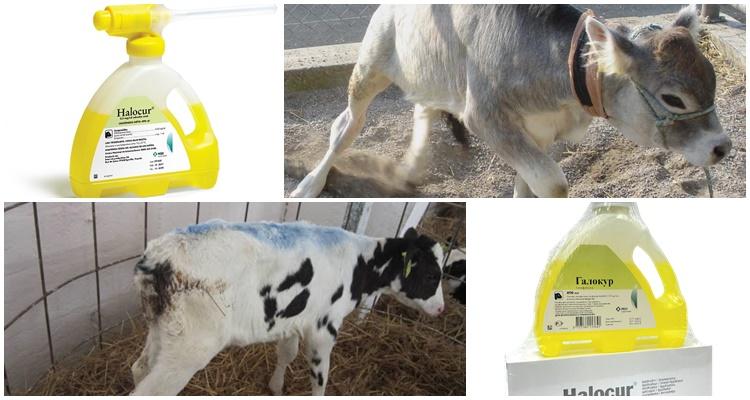
Adjunctive therapy
To increase the effectiveness of the medicines used, the sick calf is put on a therapeutic diet. Droppers are placed for the introduction of solutions that normalize the water-salt balance in the body. They give the calf decoctions that envelop the walls of the diseased intestines, reducing inflammation.
Probiotic use
Probiotics do not work against coccidia. They are necessary to restore the intestinal microflora, ruined by the multiplication of pathogenic microorganisms and the use of drugs. The probiotics are dissolved in warm water and the calf is allowed to drink instead of one meal.
Problem prevention
No vaccine has been developed for cryptosporidiosis. Therefore it is impossible to protect the calves. Oocysts are tenacious, actively multiplying, so even prevention is difficult. The main preventive measures are maintaining cleanliness in the barn, quality feeding and strengthening the immunity of calves. The litter is changed regularly. The barn is disinfected, a solution of hydrogen peroxide and 10% formalin is used. Oocysts die at temperatures below -20 ° C and above +60 ° C. Therefore, thermal disinfection can be carried out: steam, boiling water, fire.
Farm workers should periodically submit feces for analysis for the presence of coccidia. Young animals should only be bought from trusted sellers who keep livestock in proper conditions. The diseased calf is immediately separated from the herd.

